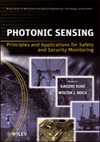Cross-Functionality for Remote Businesses

Circle K’s southern California loss prevention manager Kirk Luke uses interactive technology to keep his stores safe.
For more than 50 years, Circle K has been one of North America’s most popular and successful operators of convenience stores. Today, there are more than 2,100 Circle K stores across the U.S. and more than 4,000 international locations. In order to protect this vast infrastructure and data network, corporate controls need to be placed on company-issued employee laptops and store computers, including restricting access to the Internet and the playing of any CDs due to the possibility of viruses. This impacts interdepartmental activities such as training, human resources, risk management and maintenance.

Circle K is one of America’s favorite convenience stores. It uses a diversity of technologies including offsite interactive monitoring.
Outsourcing turns a digital video security system into a robust enterprise-wide managed video and data network, providing invaluable information for security, marketing, training, HR and other business functions.
System Employs Robust Technology
Circle K identified 24 stores located throughout Southern California, El Paso, Texas and Albuquerque, New Mexico that were in need of security technology upgrades and chose to test the new system. Westec first installed its interactive systems in these stores in 1997.
The platform utilizes continuous management of installed surveillance equipment, including intelligent video recorders (iVR), security cameras and POS system integration. With technology operating at the optimum level, additional business operations services and non-security applications can be safely layered on the network.

The outsourced interactive security system keeps employees and customers safe while improving operations at Circle K stores.
The Web-centric RMS system is ideal for Circle K’s network security restrictions since no additional software is required. When a user logs into the secured customer portal, a page offers access to all site activity, including video, available audio and reports. Additionally, RMS establishes user ID permissions; this allows management to grant and limit access by region, title, or any criteria they deem important.
Cross-Functionality Beyond Security
Circle K continues to use the Westec system for interactive security to keep the employees, customers and stores safe. According to Kirk Luke, loss prevention director of the Circle K’s Western Region, the POS search engine through Westec RMS is one of the system’s most valuable cross-functionality tools.

Circle K’s Kirk Luke simulates a “beer run” by showing how a would-be criminal could quickly stuff beer in his pants before running out the door. Since the installation of the interactive system, beer runs are down considerably.
- Research every transaction, such as time of day for a certain product, and review video of each sale combined with the cash register transaction. This is especially beneficial for sales of controlled products such as cigarettes or alcohol as well as evaluating sales for new or limited time only products, specialty marketing and displays.
- Improve customer care and quality assurance. For example, if a customer claims they were treated rudely or didn’t receive correct change, remote video can quickly verify and help resolve the issue.
- Review internal theft allegations by searching the POS system and cross checking transactions with employee shifts. To date, the system has helped the company prosecute two employees for theft and limit losses associated with other employee thefts.
- Visit stores remotely. Area managers and other executives can log into stores using the web-based RMS system to monitor store activities. Managers can voice-in over speakers in the stores and speak with employees. One area manager reported that after several months of virtual visits to a particular store, cleanliness went up 50 percent.
- Remotely evaluate maintenance needs. Before sending a repair crew to a store, a maintenance director can log into a store and visually view the situation. This is particularly helpful as equipment and facilities can vary greatly by store and region. In one situation, a maintenance director saw the specific location of a leak from a coffee machine and was able to send a repair crew with the specific parts needed to fix the older machine, saving a considerably amount of time and money.
- Review, evaluate and possibly resolve human resources issues. After a recent sexual harassment complaint, human resource managers reviewed video of the employees’ interaction and were able to resolve the situation without further action.
- Update training and employee education via the Intelligent Video Recorder (iVR) unit. Circle K’s training department can distribute training modules. Once training is completed at the store level, managers electronically sign-off on the module. This capability allows the company to continually provide employees with new information, and have confidence that the information is being properly received.

A monitor shows the camera views of the Westec InterActive system at this Circle K store in southern California.
Kirk Luke’s team has presented the Westec RMS system to Circle K senior staff, and it will become the standard for replacement of all systems. “The Westec RMS system is beneficial and easy to use, a solid solution that solves many issues,” Luke said
SIDEBAR: Transforming Video to Value
Two rapidly emerging retail security developments, networked video management platforms and video analytics, are changing the perceptions of security executives, back-office management and sales and marketing at some of the largest retailers. To minimize investments while maximizing returns, keep two very important things in mind when choosing networked video platforms and retail analytics:1. Choose an enterprise-class video management platform from an established vendor that was designed for operation and maintenance in a larger-scale, geographically dispersed retail environment. 2. Only invest in proven retail analytics that work seamlessly with your installed security infrastructure to ensure an immediate and positive impact on operations.
ENTERPRISE CLASS TWISTS
Video systems with advanced analytic capabilities (such as people counting, queue fullness and POS analytics) can dramatically boost operational efficiency, especially when integrated with access control, time-and-attendance and other business systems.
POS integration and analysis provides an effective way to identify and investigate suspicious POS activity. These solutions use sophisticated algorithms to analyze millions of daily transactions to produce exception reports of suspect transactions. This allows loss prevention to intelligently sort through the “exception” transactions and to promptly assess the video and receipt information associated with each transaction.
People counting solutions record an accurate count of the people entering and exiting a site, providing this intelligence for analysis and distribution to appropriate staff throughout the organization. People counting can differentiate between people and inanimate objects such as differentiating between a person and a shopping cart and can differentiate between a single individual and a “buying group.” defined as two people (such as a couple) walking in together.
Line queue analysis helps retail organizations enhance security and improve operational performance. Unlike conventional queue counting solutions that require infrared systems or other additional sensors, video-based queue analysis leverages existing video and IT networks, applying intelligent computer vision algorithms to accurately count and analyze queues and alert security staff and management personnel to exceptionally long lines or wait times, so that they can rapidly diffuse potential problems and reduce crowding in high risk zones.
Video queue analysis applications provide real-time visibility to queues and surrounding areas for a more complete view of current activity. They deliver comprehensive analyses of queues, transaction times, and comparative performance over time, facilitating better staff allocation, more effective management of crowded areas, and a more satisfying visitor experience. Statistical reporting tools also provide valuable data on one or more queues over virtually any period of time, including total number of alerts, average number of people in queues, and queue length and transaction time comparisons within stores and measured against targeted performance goals.
To deliver significant ROI, an integrated networked video and analytics solution should help retailers enhance the security of shoppers and staff, minimize risk and liability, improve the shopper experience and make better decisions about advertising, merchandising, and other important programs and better equip retailers to operate reliably and cost effectively. – Material provided by Mariann McDonagh of Verint Systems Inc.
Looking for a reprint of this article?
From high-res PDFs to custom plaques, order your copy today!









